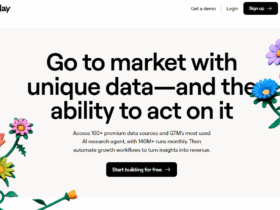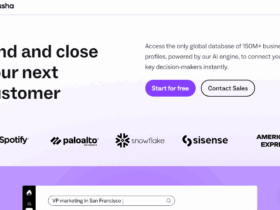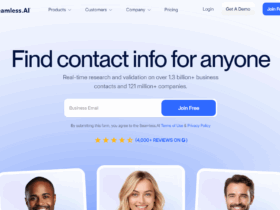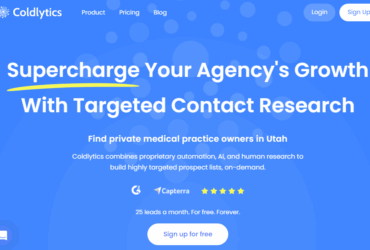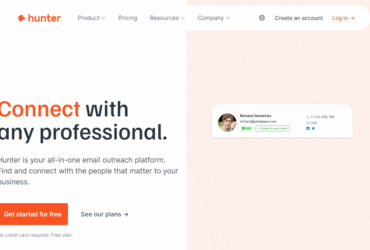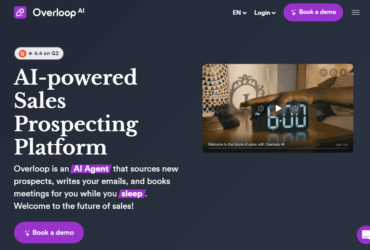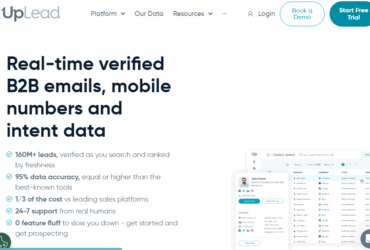Hey there, fellow marketers and brand builders! If you’ve been using Later for your influencer marketing needs and are now on the hunt for some fresh alternatives in 2025, you’re in the right place. I’ve dived deep into the influencer platform pool and surfaced with some gems (and a few duds). Let’s break it down, shall we?
1. Mavrck (Now Later Influence™)
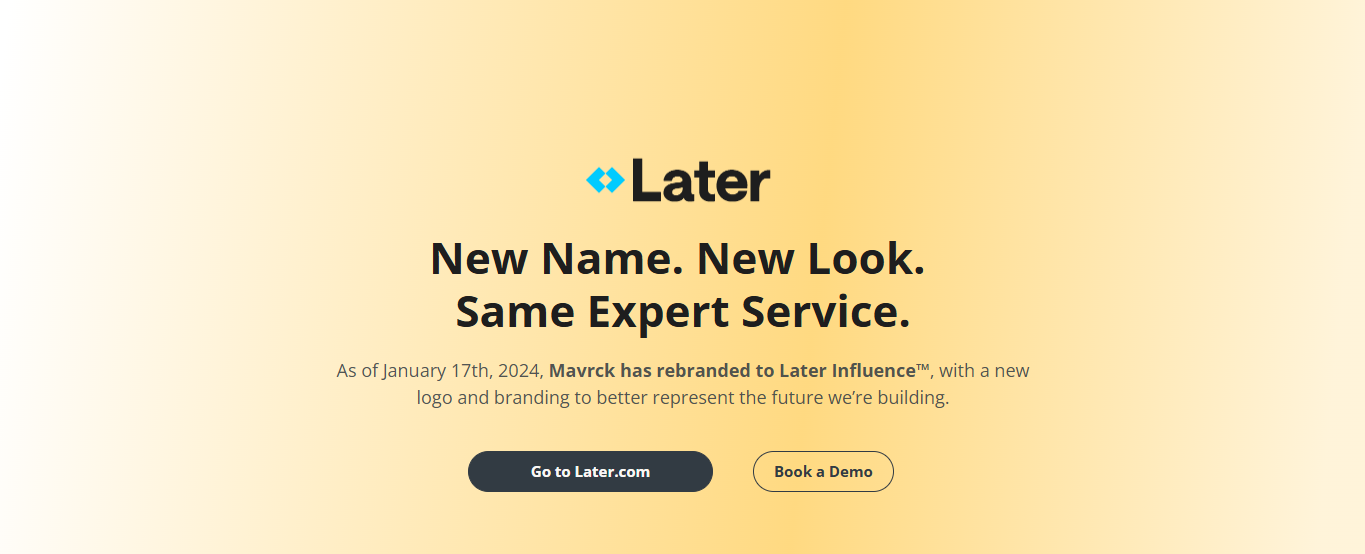
What I Loved:
-
All-in-One Powerhouse: Mavrck, now rebranded as Later Influence™, offers a comprehensive suite for influencer marketing.
-
Enterprise-Grade Features: Perfect for large brands needing robust tools.
What I Didn’t:
-
Complexity: The platform can be overwhelming for newcomers.
-
Pricing: On the higher end, making it less accessible for smaller businesses.
Pricing: Custom pricing based on needs.
Verdict: If you’re a big brand with big needs, Later Influence™ is worth the investment.
2. Grin
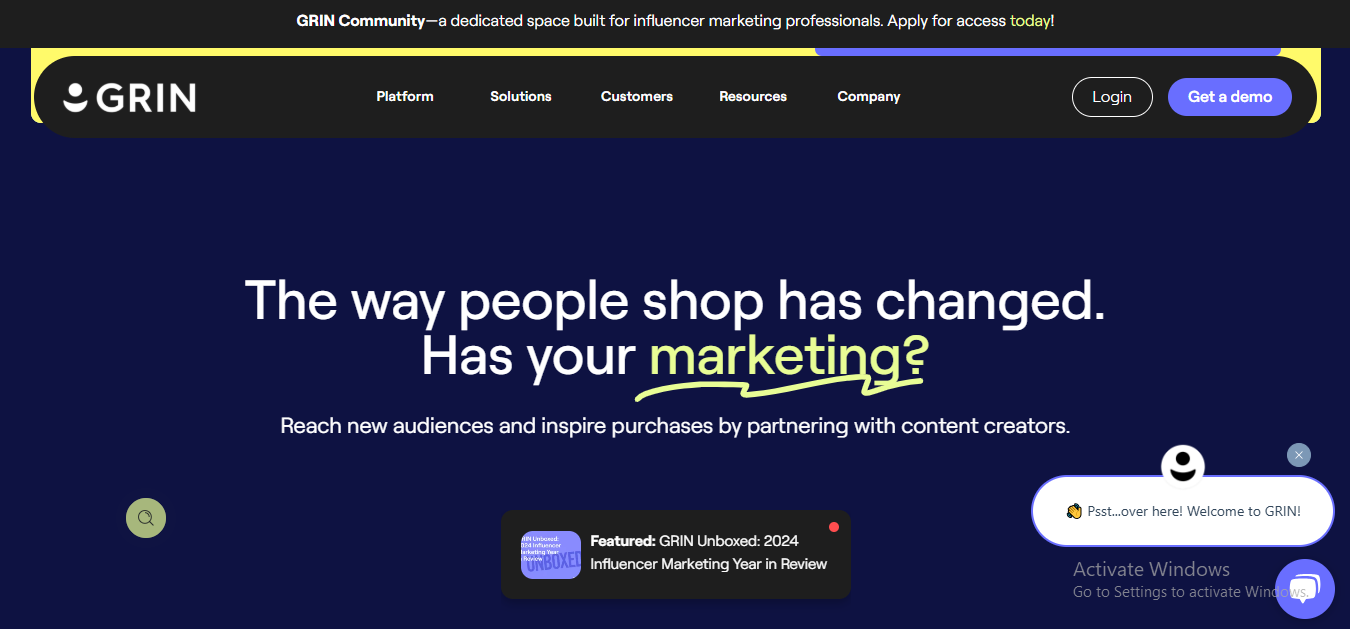
What I Loved:
-
E-commerce Integration: Seamlessly connects with platforms like Shopify.
-
Robust CRM: Manage influencer relationships effectively.
What I Didn’t:
-
Learning Curve: Takes time to master all features.
-
Pricey: Not ideal for startups on a tight budget.
Pricing: Custom pricing; generally on the premium side.
Verdict: A solid choice for e-commerce brands ready to scale their influencer game.
3. Influencity
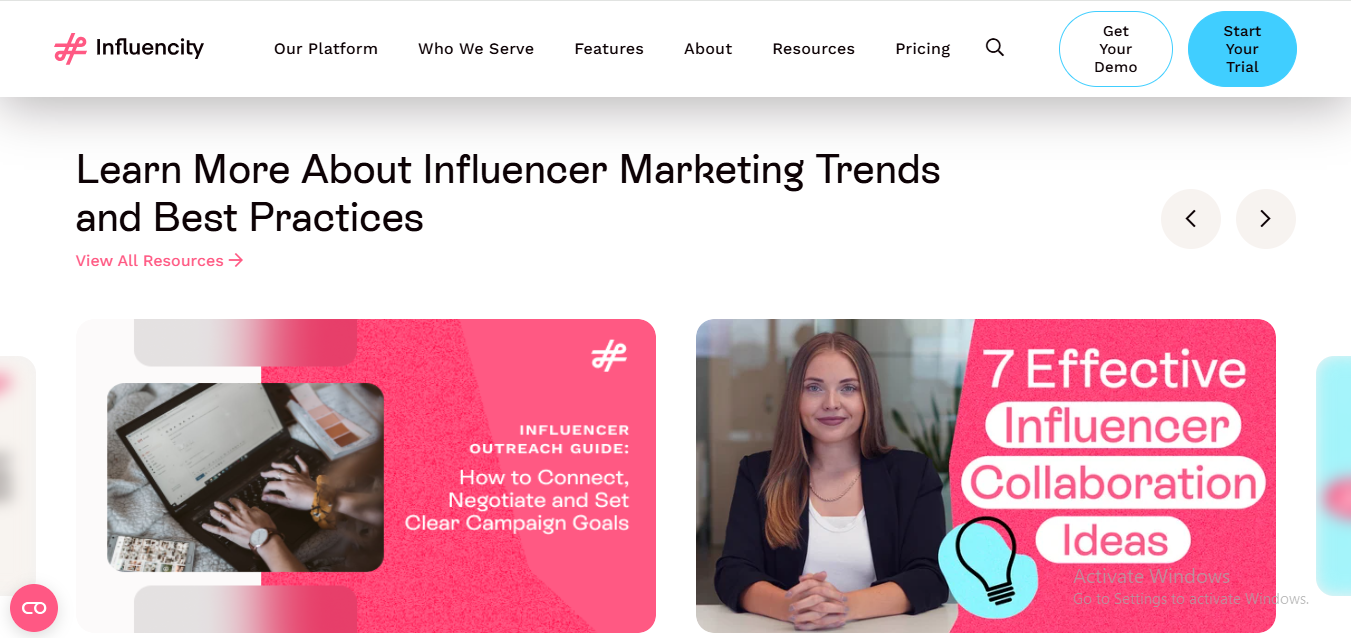
What I Loved:
-
AI-Powered Discovery: Find the perfect influencers with smart filters.
-
Comprehensive Analytics: Dive deep into campaign performance.
What I Didn’t:
-
Interface: Could be more intuitive.
-
Support: Response times can be slow.
Pricing: Starts at $168/month.
Verdict: Great for data-driven marketers who love diving into analytics.
4. Hashtag Paid
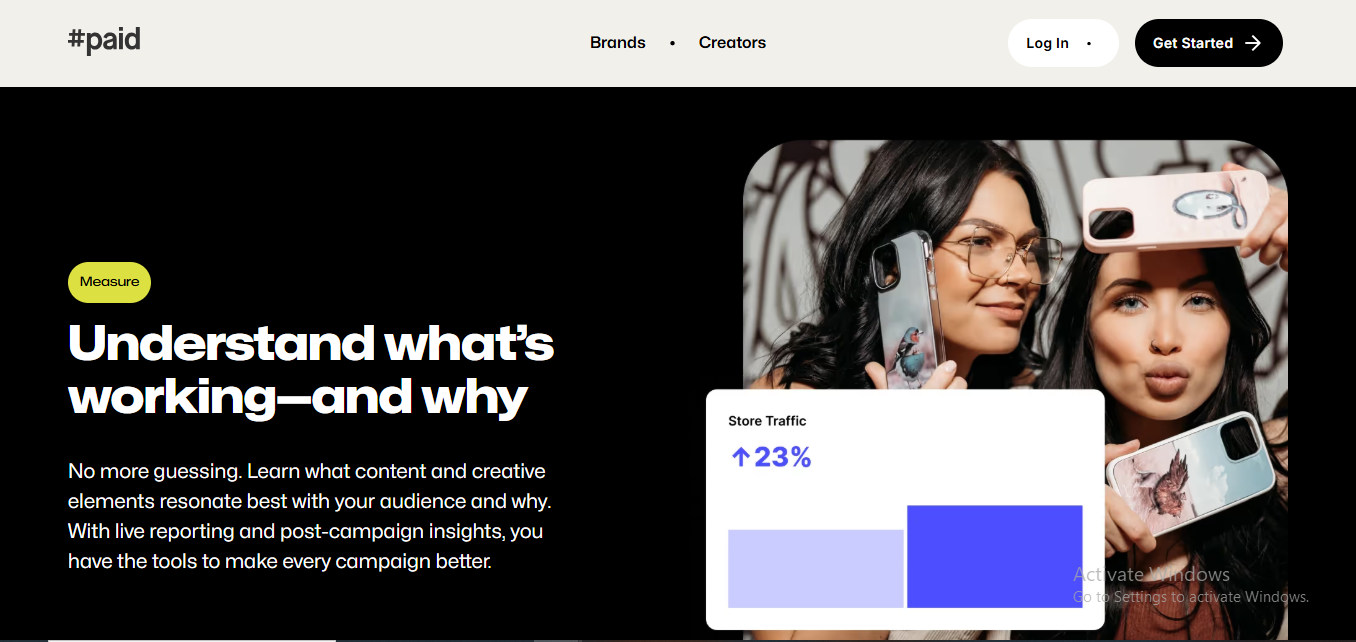
What I Loved:
-
Creator Matching: Connects you with creators who genuinely love your brand.
-
Streamlined Workflow: From discovery to payment, it’s all smooth.
What I Didn’t:
-
Limited Customization: Campaign templates can feel restrictive.
-
Pricing Transparency: Hard to find clear pricing info.
Pricing: Custom pricing based on campaign needs.
Verdict: Ideal for brands seeking authentic collaborations without the hassle.
5. Lolly
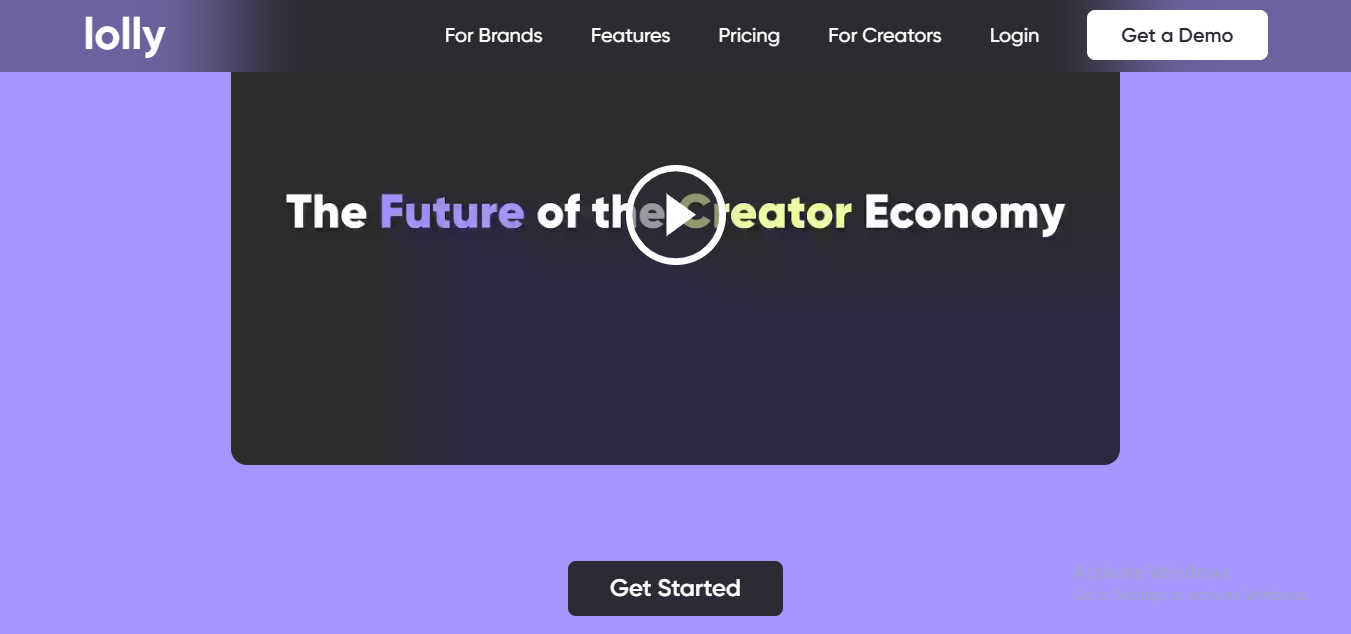
What I Loved:
-
User-Friendly: Even your grandma could launch a campaign here.
-
Real-Time Analytics: Track performance as it happens.
What I Didn’t:
-
Limited Features: Lacks some advanced tools found in competitors.
-
Smaller Creator Pool: Not as extensive as others.
Pricing: Transparent pricing; starts at $99/month.
Verdict: Perfect for small businesses dipping their toes into influencer marketing.
6. The Influencer Room
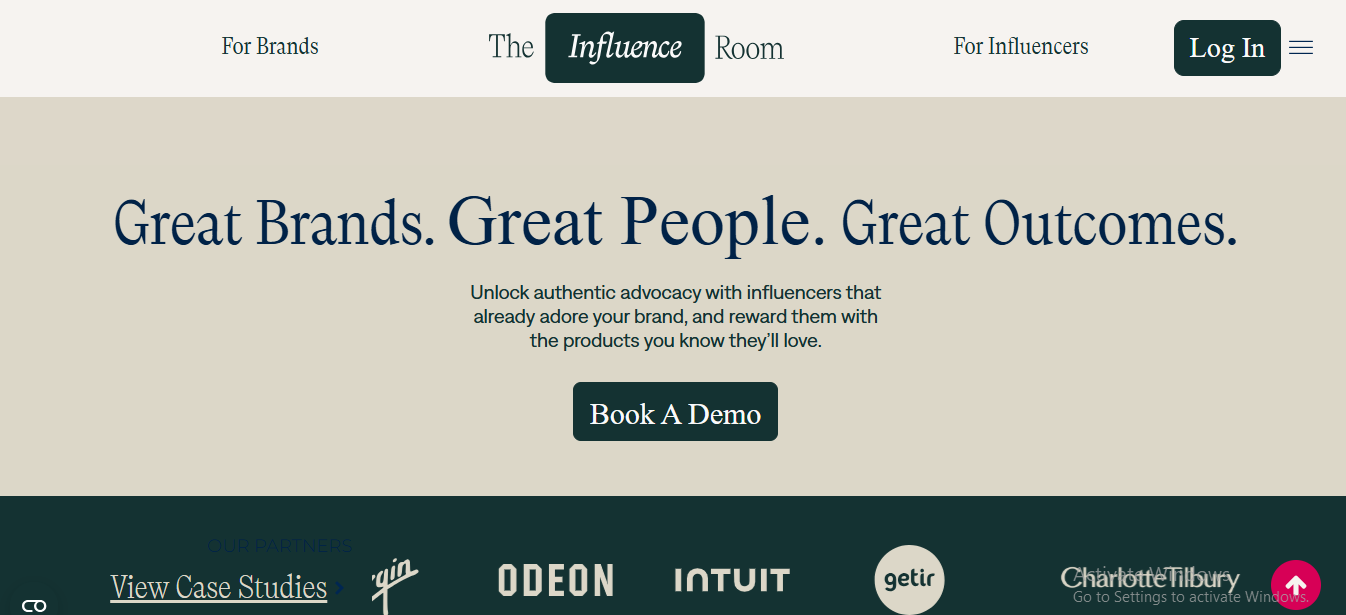
What I Loved:
-
Exclusive Community: Connects brands with a curated list of influencers.
-
Personalized Approach: Focuses on building genuine relationships.
What I Didn’t:
-
Limited Scalability: Not ideal for large-scale campaigns.
-
Niche Focus: May not suit all industries.
Pricing: Custom pricing based on collaboration scope.
Verdict: Best for brands looking for quality over quantity in influencer partnerships.
7. The Cirqle
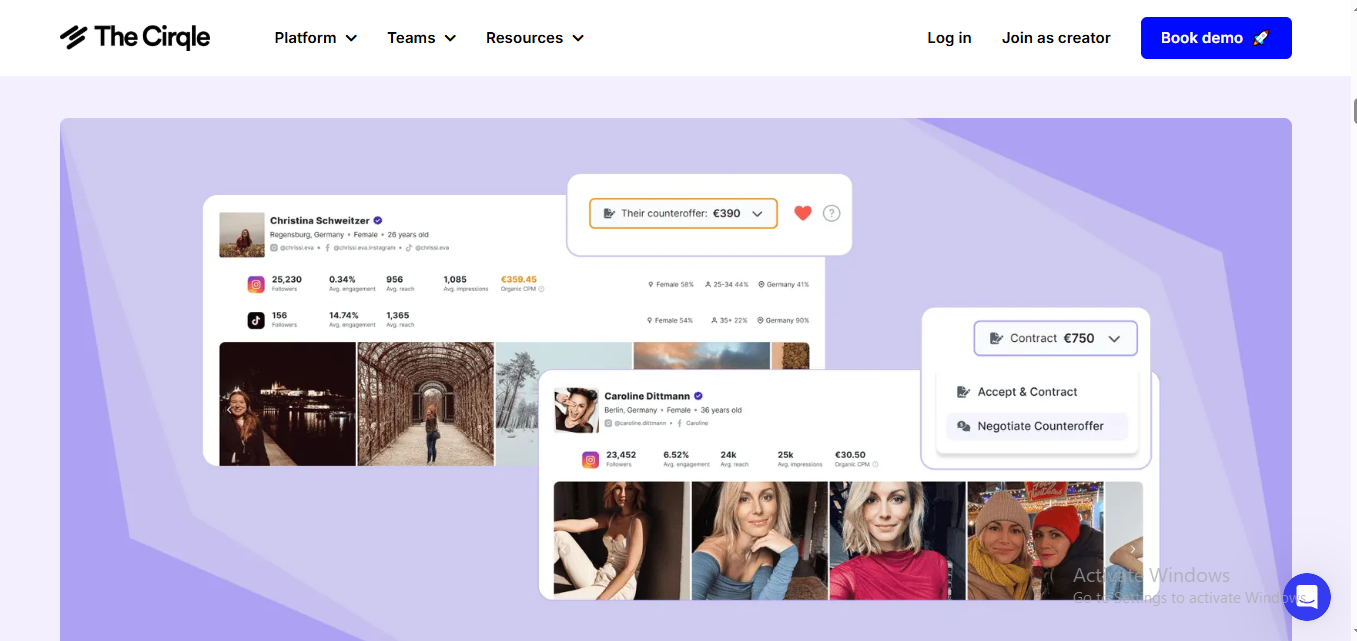
What I Loved:
-
AI-Driven Insights: The Cirqle offers AI-powered tools that provide deep insights into influencer performance, helping brands make data-driven decisions.
-
Shopify Integration: Seamless integration with Shopify makes it easier for e-commerce brands to track ROI directly from influencer campaigns.
What I Didn’t:
-
Learning Curve: The platform’s advanced features can be overwhelming for beginners.
-
Pricing Transparency: Lack of clear pricing information can be a hurdle for small businesses.
Pricing: Custom pricing based on needs.
Verdict: Ideal for data-driven e-commerce brands looking for in-depth analytics and seamless integration with their online stores.
8. Popular Pays
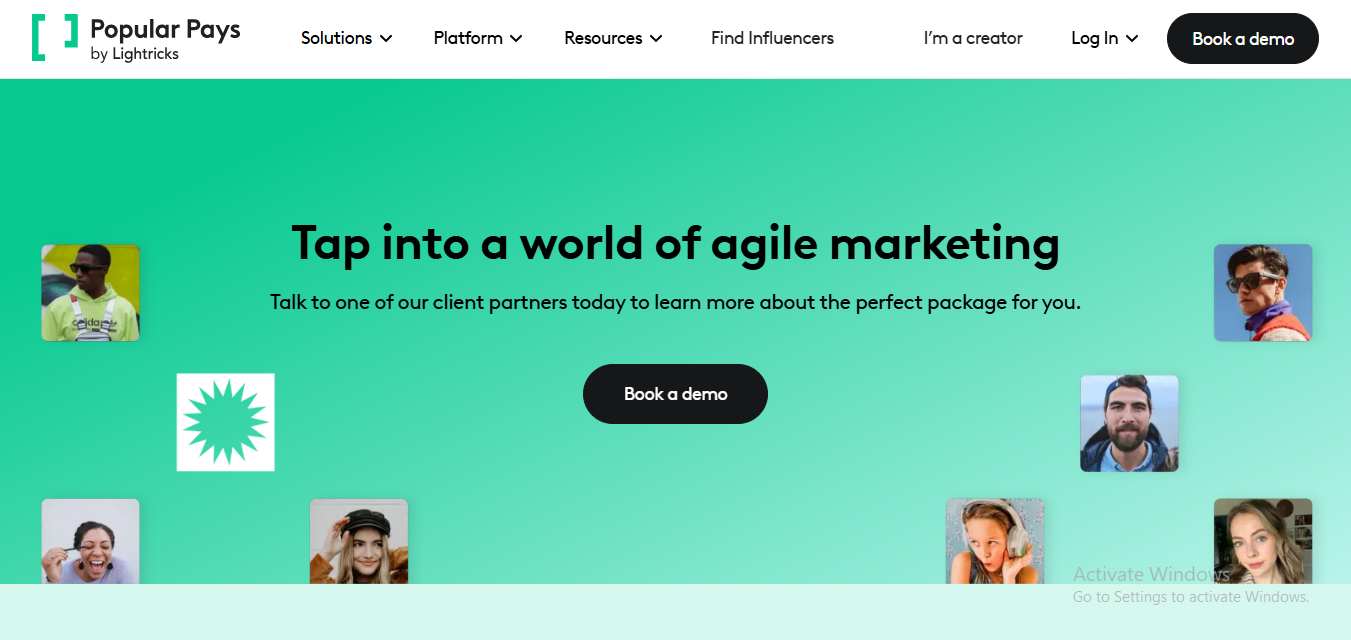
What I Loved:
-
Content Creation Focus: Popular Pays emphasizes high-quality content creation, connecting brands with creators who excel in producing engaging visuals.
-
User-Friendly Interface: The platform is intuitive, making it easy to manage campaigns and track performance.
What I Didn’t:
-
Limited Influencer Pool: Compared to some competitors, the range of available influencers is narrower.
-
Pricing: Can be on the higher side for smaller businesses.
Pricing: Custom pricing based on campaign requirements.
Verdict: Great for brands prioritizing top-notch content and looking for a straightforward platform to manage collaborations.
9. Collabstr
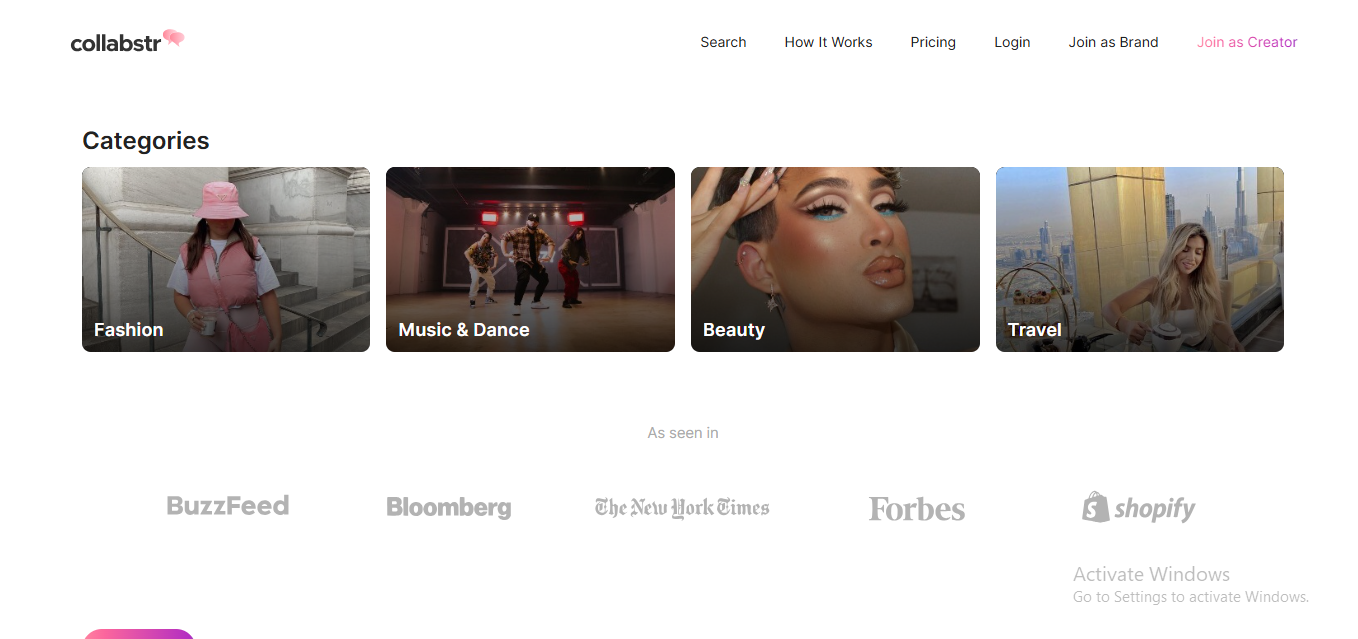
What I Loved:
-
Marketplace Model: Collabstr operates as a marketplace, allowing brands to browse and hire influencers directly, streamlining the collaboration process.
-
Transparent Pricing: Clear pricing for influencer services helps in budgeting and decision-making.
What I Didn’t:
-
Limited Campaign Management Tools: Lacks some advanced features for managing complex campaigns.
-
Quality Variance: The open marketplace model can lead to inconsistencies in influencer quality.
Pricing: Free to browse; pay per collaboration.
Verdict: Suitable for small to medium-sized businesses looking for a cost-effective way to engage with influencers on a per-project basis.
10. Kolsquare

What I Loved:
-
Comprehensive Analytics: Kolsquare provides detailed analytics, helping brands measure the effectiveness of their influencer campaigns.
-
Global Reach: Access to a diverse range of influencers across various regions and platforms.
What I Didn’t:
-
Complex Interface: The platform’s extensive features can be daunting for new users.
-
Pricing: May not be suitable for brands with limited budgets.
Pricing: Custom pricing based on campaign needs.
Verdict: Best for larger brands seeking in-depth analytics and a broad influencer network to support global campaigns.
11. Captiv8

What I Loved:
-
End-to-End Solution: Captiv8 offers a comprehensive suite of tools, from influencer discovery to campaign management and analytics.
-
AI-Powered Insights: Utilizes AI to provide predictive analytics, enhancing decision-making processes.
What I Didn’t:
-
Pricing: Premium features come with a higher price tag, potentially limiting access for smaller businesses.
-
Complexity: The platform’s extensive capabilities may require a learning period for new users.
Pricing: Custom pricing based on campaign requirements.
Verdict: Ideal for brands seeking a robust, data-driven platform to manage comprehensive influencer marketing strategies.
12. Aspire
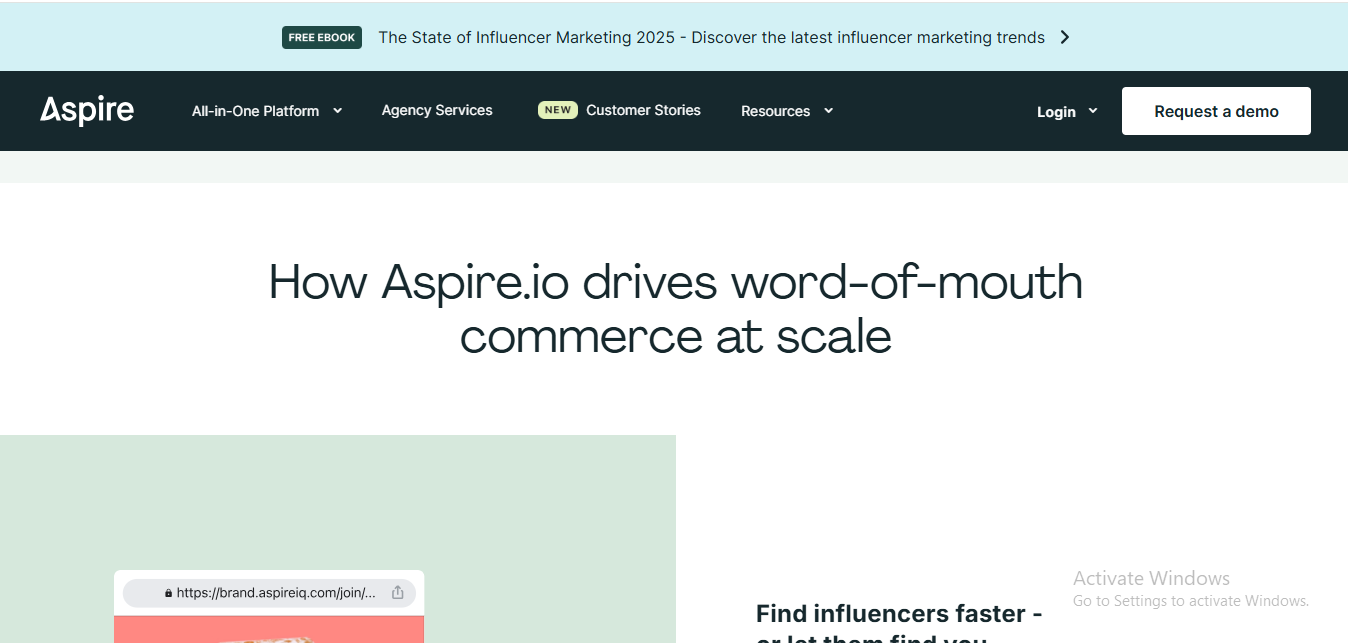
What I Loved:
-
E-commerce Integration: Aspire integrates seamlessly with e-commerce platforms, facilitating product seeding and affiliate marketing campaigns.
-
User-Generated Content (UGC): Encourages the creation and utilisation of UGC, enhancing brand authenticity.
What I Didn’t:
-
Pricing Transparency: Lack of clear pricing information can be a barrier for budget-conscious brands.
-
Limited Influencer Discovery Tools: Compared to competitors, the influencer discovery features are less robust.
Pricing: Custom pricing based on campaign needs.
Verdict: Great for e-commerce brands aiming to leverage UGC and streamline their influencer marketing efforts.
13. TRIBE
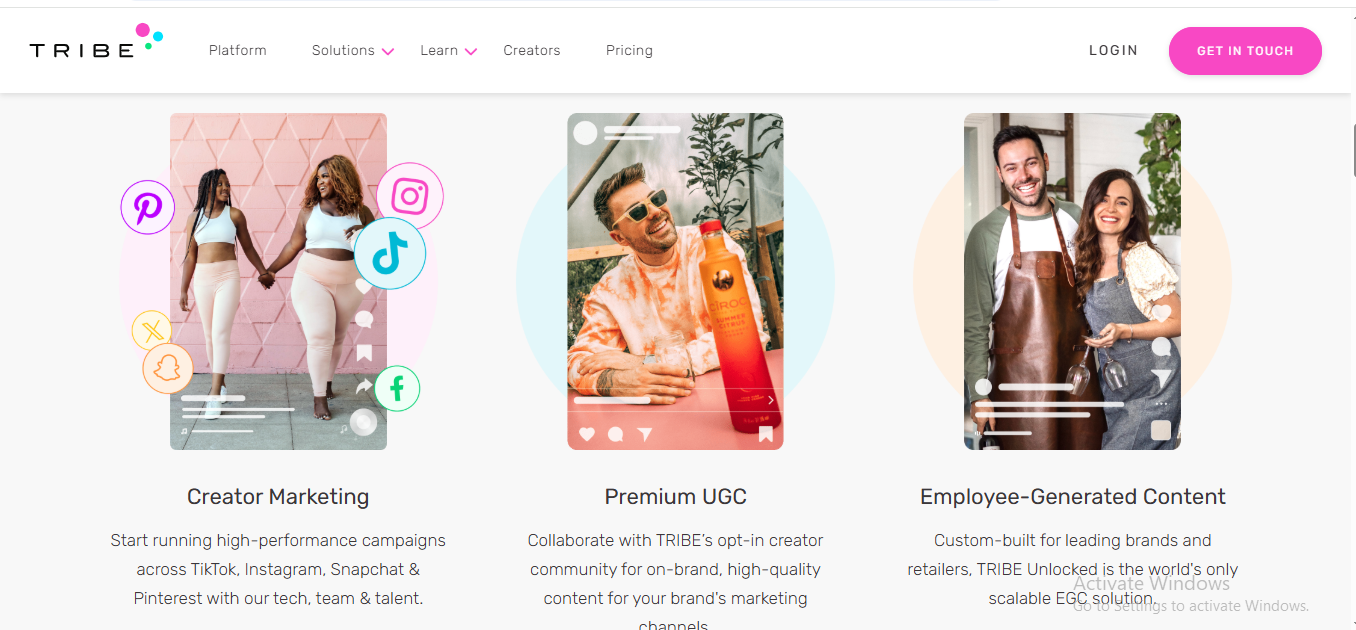
What I Loved:
-
Self-Serve Simplicity: TRIBE offers a user-friendly platform where brands can post briefs and receive content pitches directly from creators.
-
Quality Content: The emphasis on high-quality, authentic content ensures that brand messages resonate well with target audiences.
What I Didn’t:
-
Limited Influencer Pool: Compared to some competitors, the range of available influencers is narrower.
-
Pricing Transparency: Lack of clear pricing information can be a hurdle for small businesses.
Pricing: Custom pricing based on campaign requirements.
Verdict: Ideal for brands seeking authentic content and a straightforward collaboration process.
14. Braze
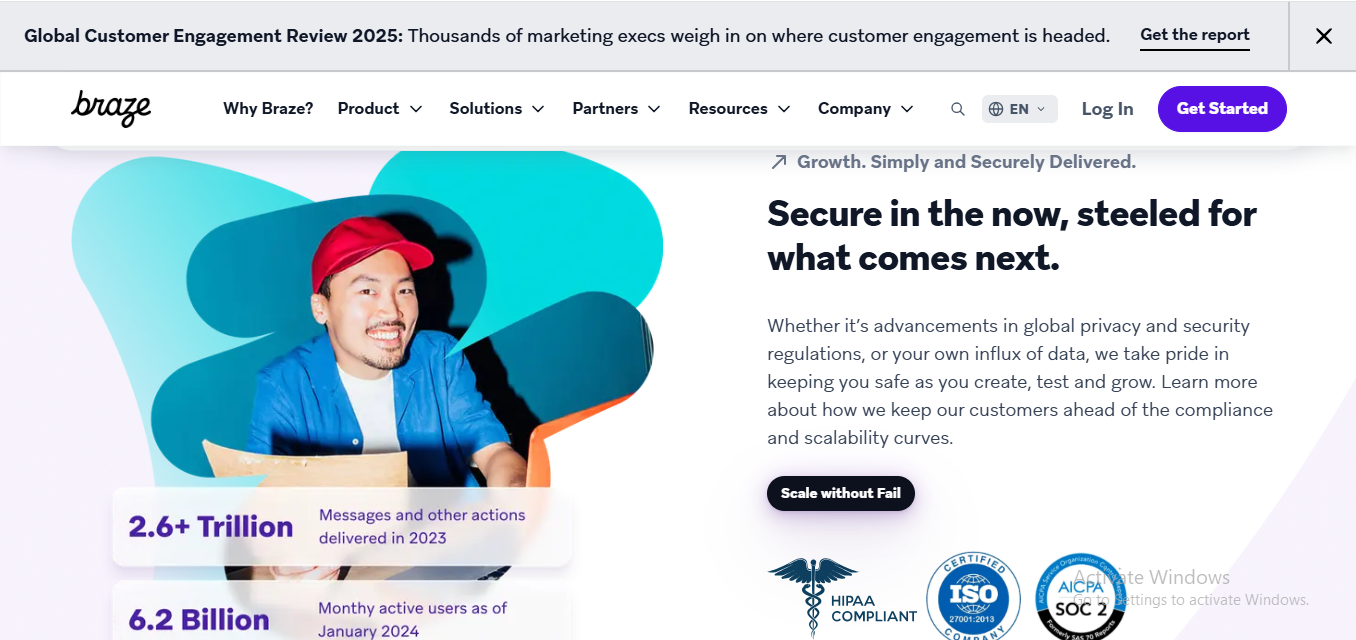
What I Loved:
-
Comprehensive Engagement Tools: Braze provides a suite of tools for customer engagement, including personalized messaging and analytics.
-
Scalability: Designed to scale with companies of all sizes, making it versatile for various business needs.
What I Didn’t:
-
Complexity: The platform’s extensive features can be overwhelming for new users.
-
Pricing: Premium features come with a higher price tag, potentially limiting access for smaller businesses.
Pricing: Custom pricing based on campaign requirements.
Verdict: Best suited for larger brands seeking a comprehensive customer engagement platform.
15. IZEA
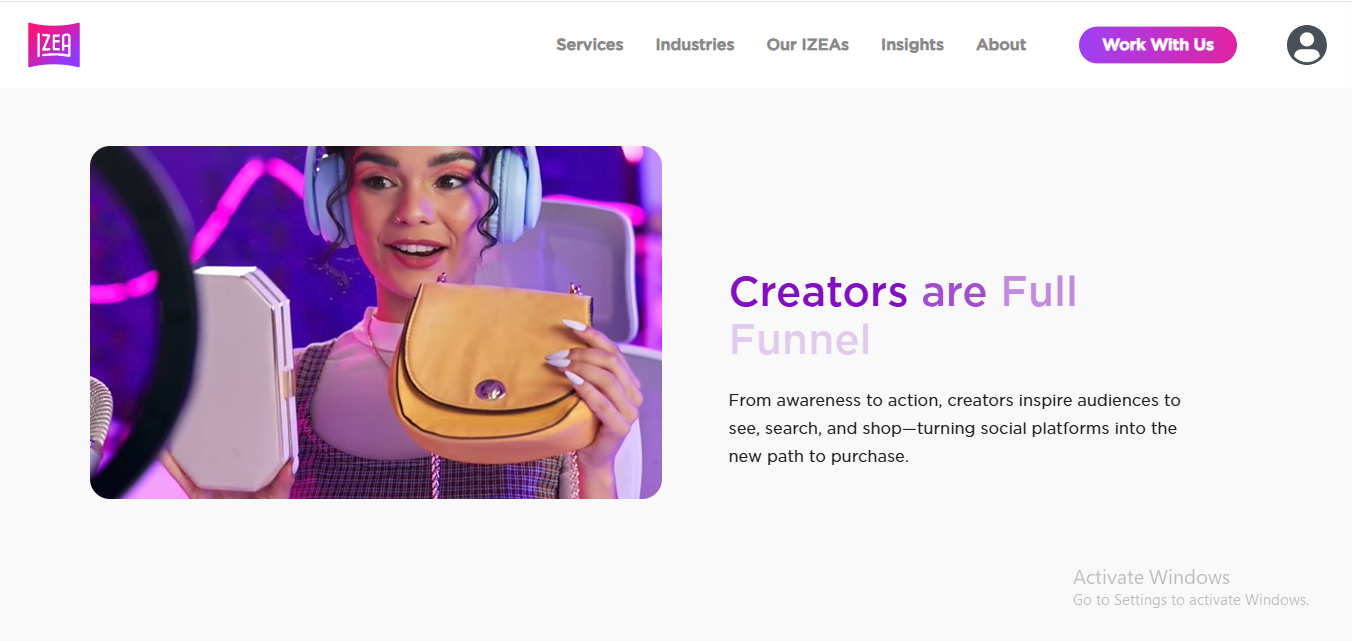
What I Loved:
-
Diverse Marketplace: IZEA offers a vast marketplace connecting brands with influencers across various niches.
-
Robust Analytics: Provides detailed analytics to measure campaign performance effectively.
What I Didn’t:
-
Interface: The platform’s interface can be less intuitive compared to some competitors.
-
Pricing: May not be suitable for brands with limited budgets.
Pricing: Custom pricing based on campaign needs.
Verdict: Great for brands seeking a wide range of influencer options and detailed campaign analytics.
16. Insense
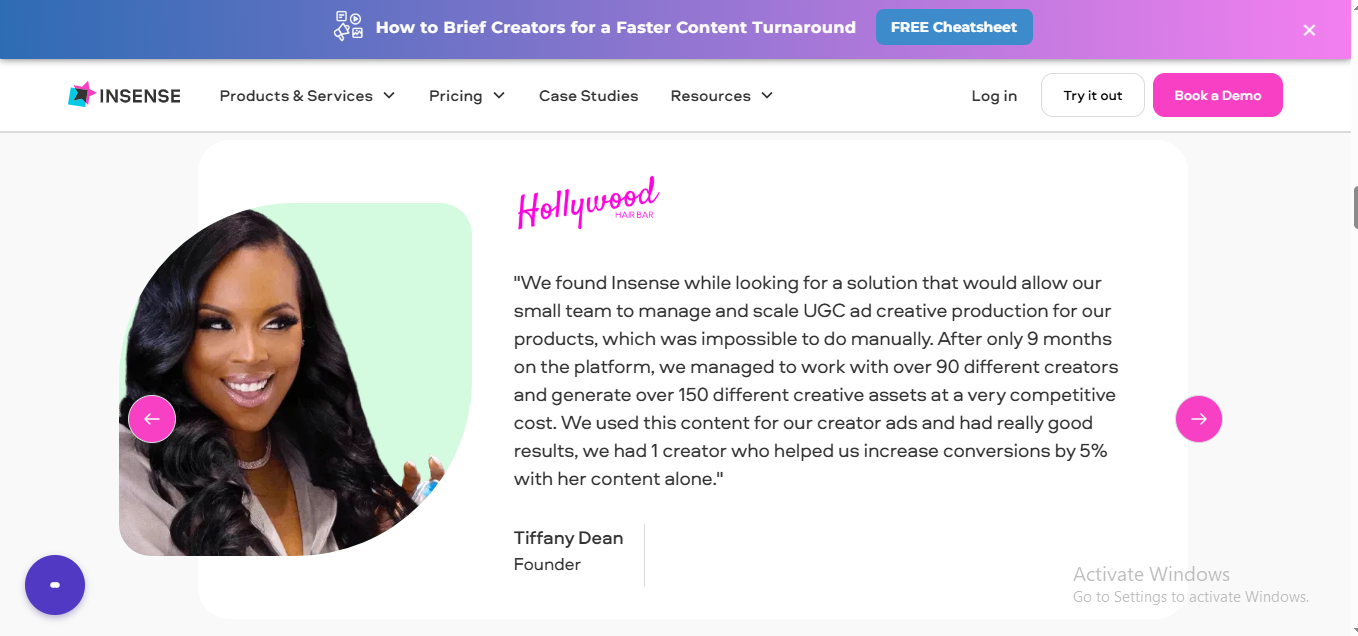
What I Loved:
-
UGC Focus: Insense specializes in User-Generated Content, making it ideal for brands looking for authentic content.
-
Direct Communication: The platform allows direct chat with creators, streamlining the collaboration process.
What I Didn’t:
-
Limited Campaign Management Tools: Lacks some advanced features for managing complex campaigns.
-
Quality Variance: The open marketplace model can lead to inconsistencies in influencer quality.
Pricing: Starts at $50 per video; offers both self-service and managed service options.
Verdict: Perfect for small to medium-sized businesses looking for cost-effective UGC collaborations.
17. Influence.co
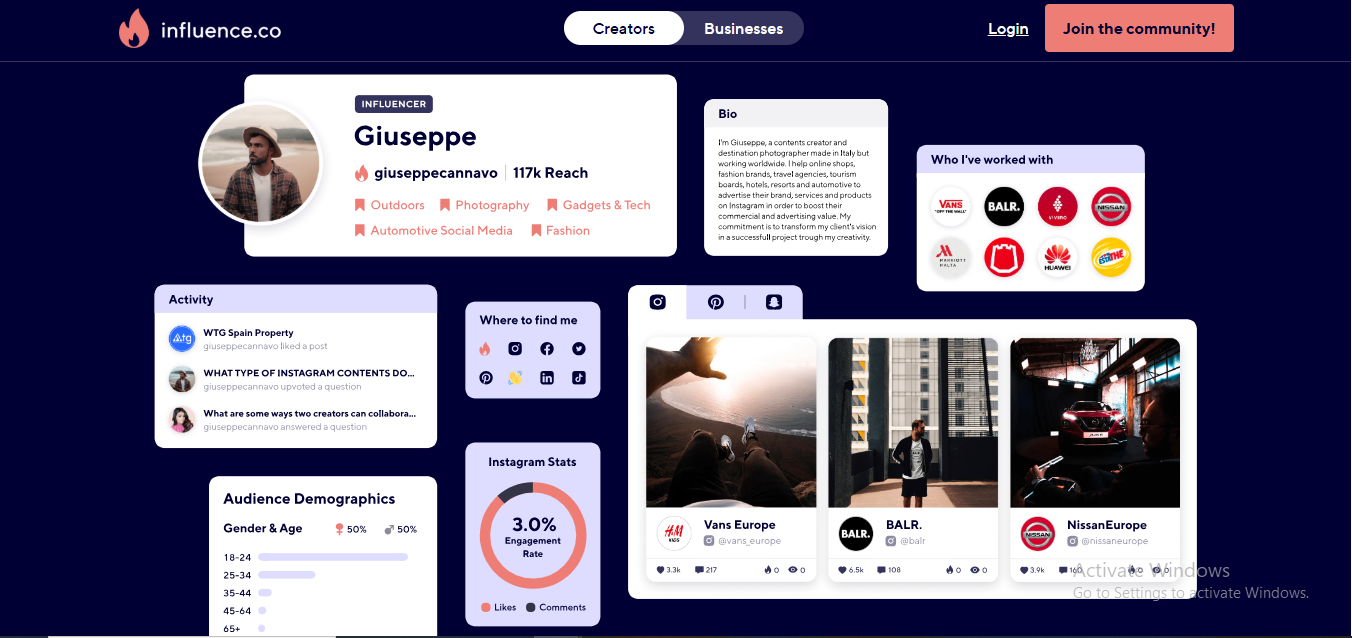
What I Loved:
-
Community Building: Influence.co offers a platform for influencers to build their professional network and showcase their work.
-
Monetization Opportunities: Provides multiple ways for creators to monetize their influence, including brand deals and paid communities.
What I Didn’t:
-
Limited Campaign Management Tools: Lacks some advanced features for managing complex campaigns.
-
Quality Variance: The open community model can lead to inconsistencies in influencer quality.
Pricing: Free to join; offers premium features at additional costs.
Verdict: Suitable for influencers looking to build their network and monetize their content.
18. Influencer.com
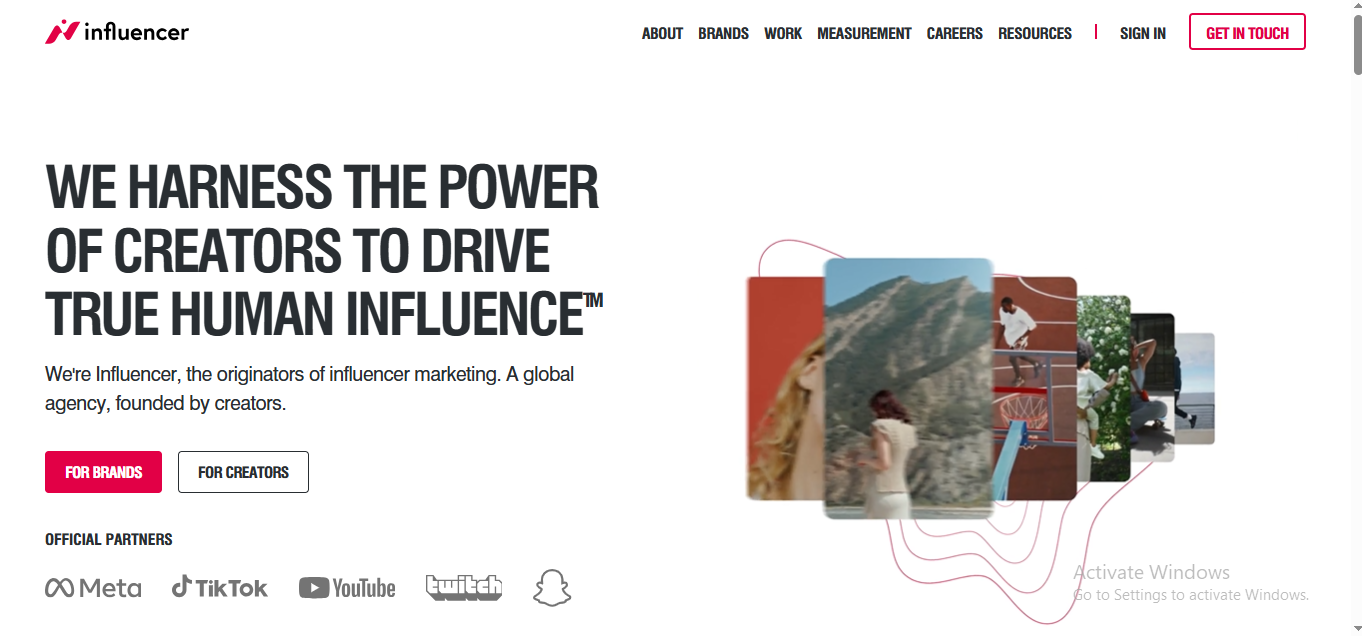
What I Loved:
-
Comprehensive Campaign Management: Influencer.com offers end-to-end solutions for influencer marketing campaigns.
-
Data-Driven Approach: Utilizes data and analytics to optimize campaign performance and ROI.
What I Didn’t:
-
Pricing: Premium features come with a higher price tag, potentially limiting access for smaller businesses.
-
Complexity: The platform’s extensive capabilities may require a learning period for new users.
Pricing: Custom pricing based on campaign requirements.
Verdict: Ideal for brands seeking a comprehensive, data-driven platform to manage influencer marketing strategies.
19. Shout Agency
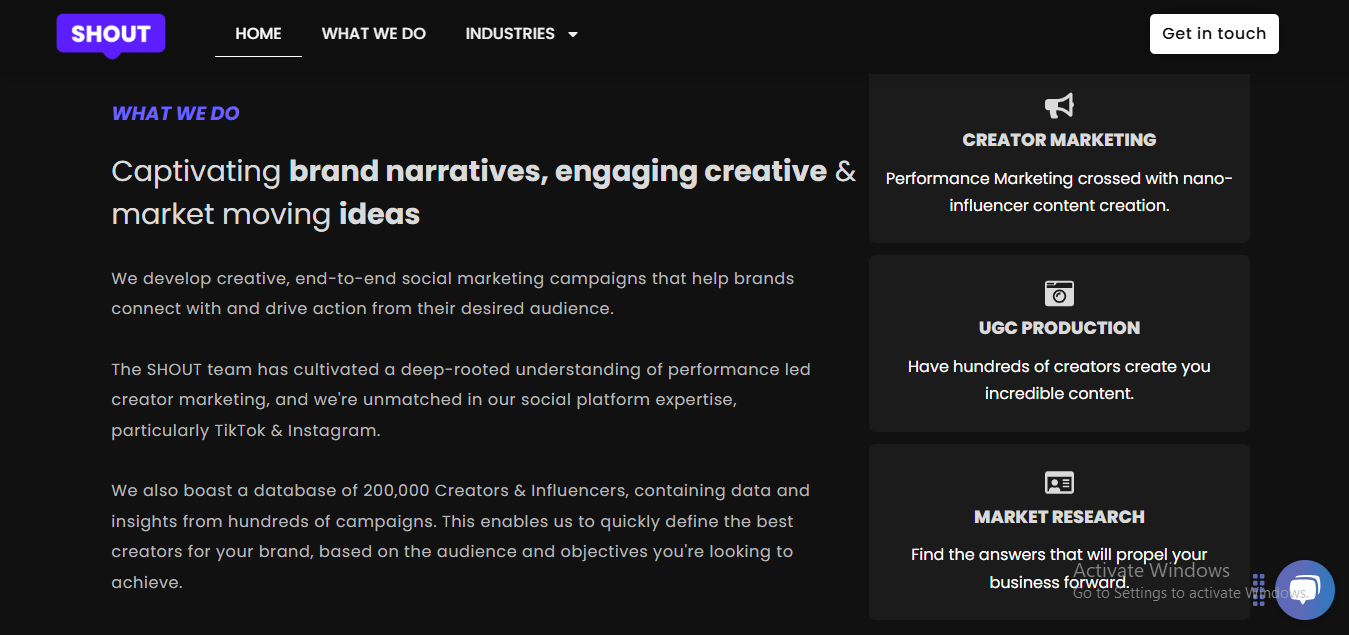
What I Loved:
-
Tailored Campaigns: Shout Agency specializes in influencer marketing campaigns tailored to your brand’s goals. They match you with influencers who really vibe with your brand. 🔥
-
End-to-End Service: From influencer identification to post-campaign analysis, they pretty much handle it all. It’s like having an influencer marketing assistant at your disposal! 🎯
What I Didn’t:
-
Pricing Transparency: The downside? They don’t make pricing super clear on their website. If you’re on a tight budget, you might want to reach out first to get a quote. 😬
-
Slightly Slow Response Times: When you need fast results, their response time can be a little slow. It’s not the biggest deal but worth noting.
Pricing:
-
Pricing is customized based on your campaign needs. Expect it to be more on the premium side.
Verdict:
-
Perfect for brands that want full-service influencer marketing, but you might need a bigger budget to make it work.
20. Klear
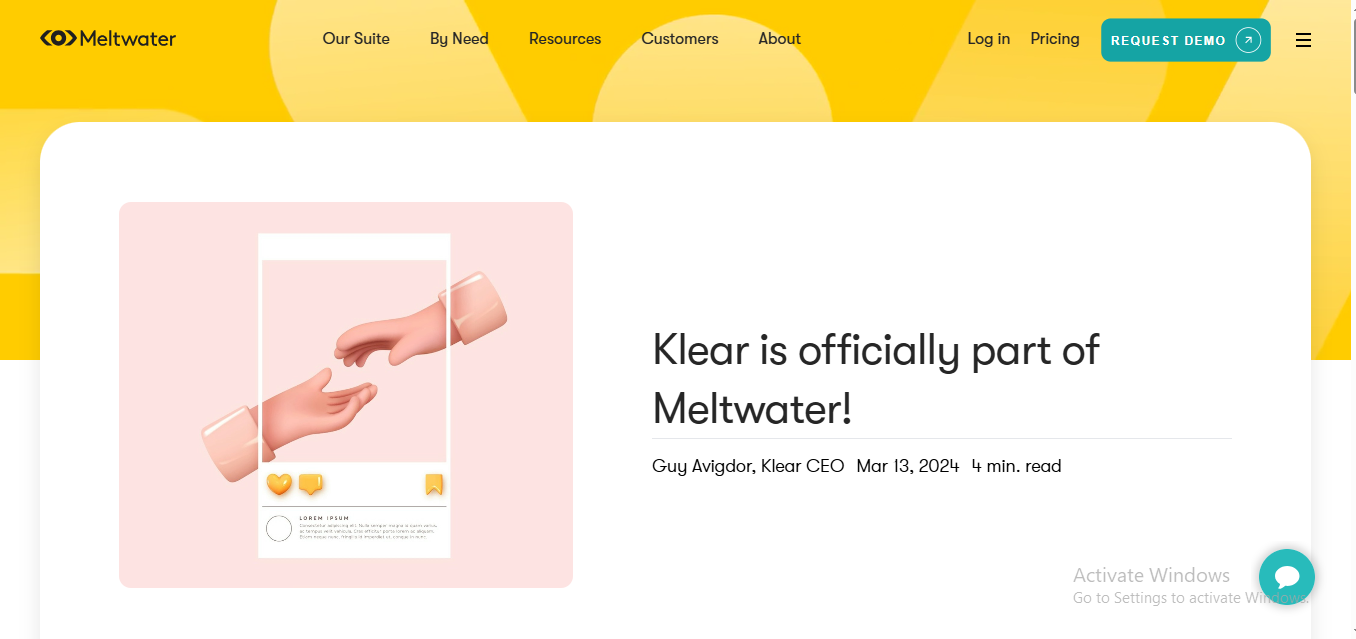
What I Loved:
-
Advanced Analytics: Klear’s analytics are top-notch. If you’re obsessed with data and need deep insights into your influencer campaigns, this is your platform.
-
Influencer Discovery: Their influencer database is massive. Finding the perfect influencer is pretty easy, and the search filters are on point.
What I Didn’t:
-
Interface Complexity: It’s a little on the complicated side, so if you’re new to influencer marketing, it might take you some time to get the hang of it.
-
Higher Price Point: Klear is not the most budget-friendly option, so it’s best suited for bigger brands or those with a solid marketing budget.
Pricing:
-
Pricing is based on the features you need, but expect to pay a premium for their detailed reporting and analytics.
Verdict:
-
Ideal for data-driven brands that need deep insights and are willing to pay for it.
21. Brandbassador

What I Loved:
-
Influencer Ambassador Program: This platform is all about building long-term relationships with influencers. If you want brand ambassadors that are fully invested in your brand, this is your jam.
-
Easy to Use: It’s pretty simple to set up and manage campaigns. You don’t have to be a marketing genius to get it working.
What I Didn’t:
-
Limited to Ambassador Programs: If you’re looking for short-term campaigns or one-off influencer posts, this isn’t the platform for that. It’s really built for long-term partnerships.
-
Pricing Could Be Lower: While the platform is great, the pricing could be more competitive for smaller brands.
Pricing:
-
Custom pricing based on needs, but typically on the higher end for small businesses.
Verdict:
-
Perfect for brands looking for long-term, sustainable influencer partnerships. If you’re into ambassadors, this is the one.
22. Shout UGC
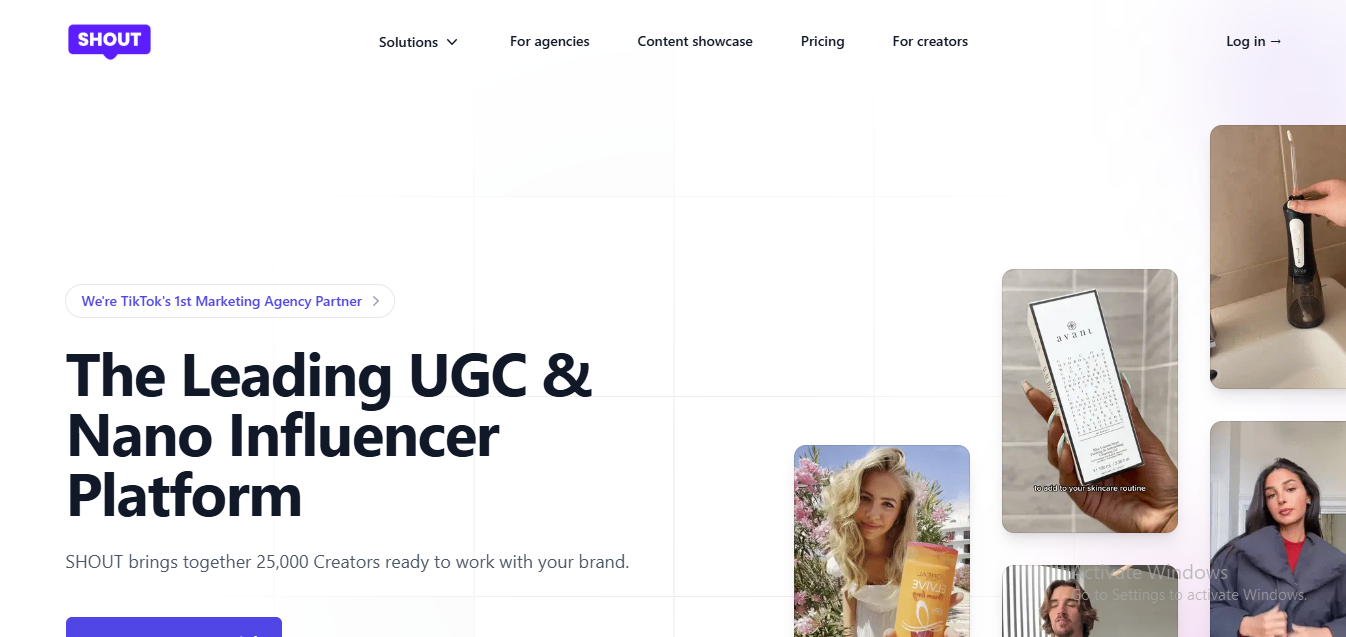
What I Loved:
-
User-Generated Content Focus: Shout UGC lets you tap into the power of user-generated content (UGC) for your campaigns. That means more authentic content from real people, not just influencers. 🧑🤝🧑
-
Simple & Effective: It’s easy to navigate, and you can quickly find content that works for your brand without any hassle.
What I Didn’t:
-
Lack of Big-Name Influencers: If you’re looking to work with major influencers, Shout UGC might not be the best fit. It’s more about the everyday person creating content for you.
-
Limited Features: It’s not as feature-rich as some of the other platforms on this list. It’s more of a no-frills, straightforward tool.
Pricing:
-
Custom pricing based on needs, generally affordable for smaller brands.
Verdict:
-
A great choice if you want authentic, everyday content and are working with a smaller budget.
23. CreatorIQ
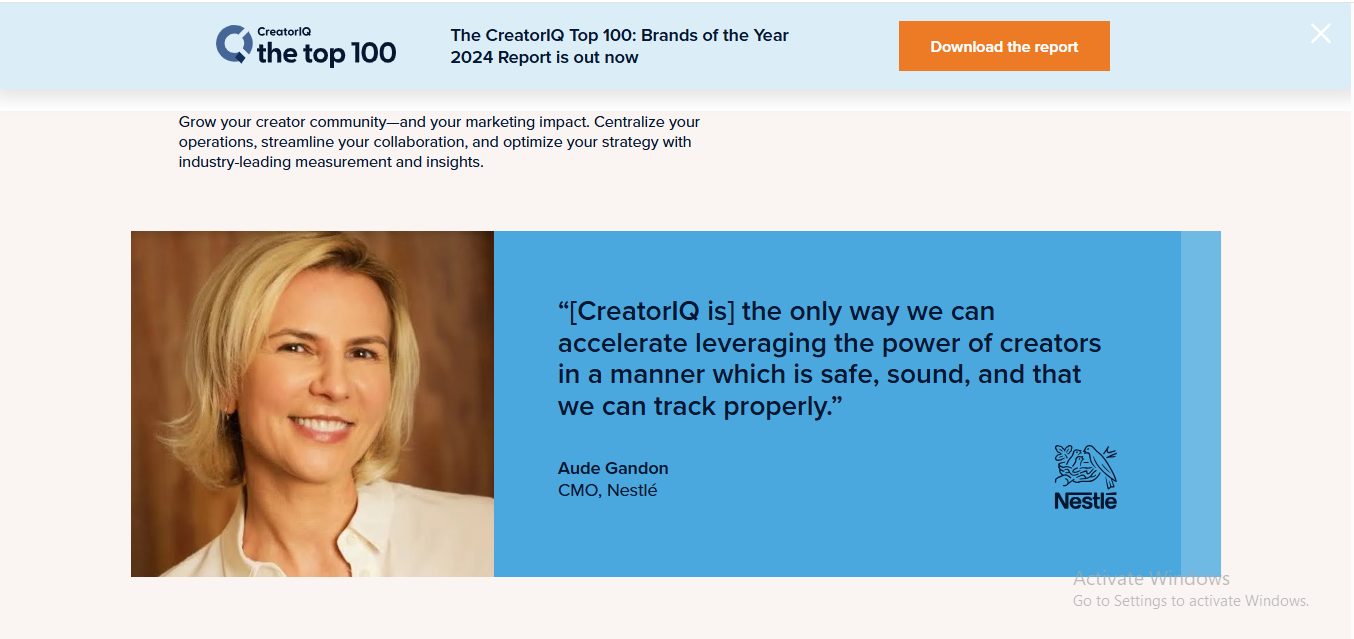
What I Loved:
-
Influencer Database: CreatorIQ has a killer database with influencers across all industries. They make it easy to find creators who align perfectly with your brand.
-
Campaign Tracking: It’s all about results with CreatorIQ. You get tons of tracking and reporting to see how your campaigns are performing.
What I Didn’t:
-
Learning Curve: It can be overwhelming for beginners because of all the features. If you’re not familiar with influencer marketing, it may take a minute to figure out.
-
Pricing Could Be Better: Like Klear, this one comes with a premium price tag, which may not be ideal for smaller brands.
Pricing:
-
Custom pricing based on your needs. Definitely on the pricier side, but worth it if you want robust analytics and a huge database.
Verdict:
-
Best for big brands or agencies who need powerful analytics and influencer discovery tools.
24. Influencer Marketing AI
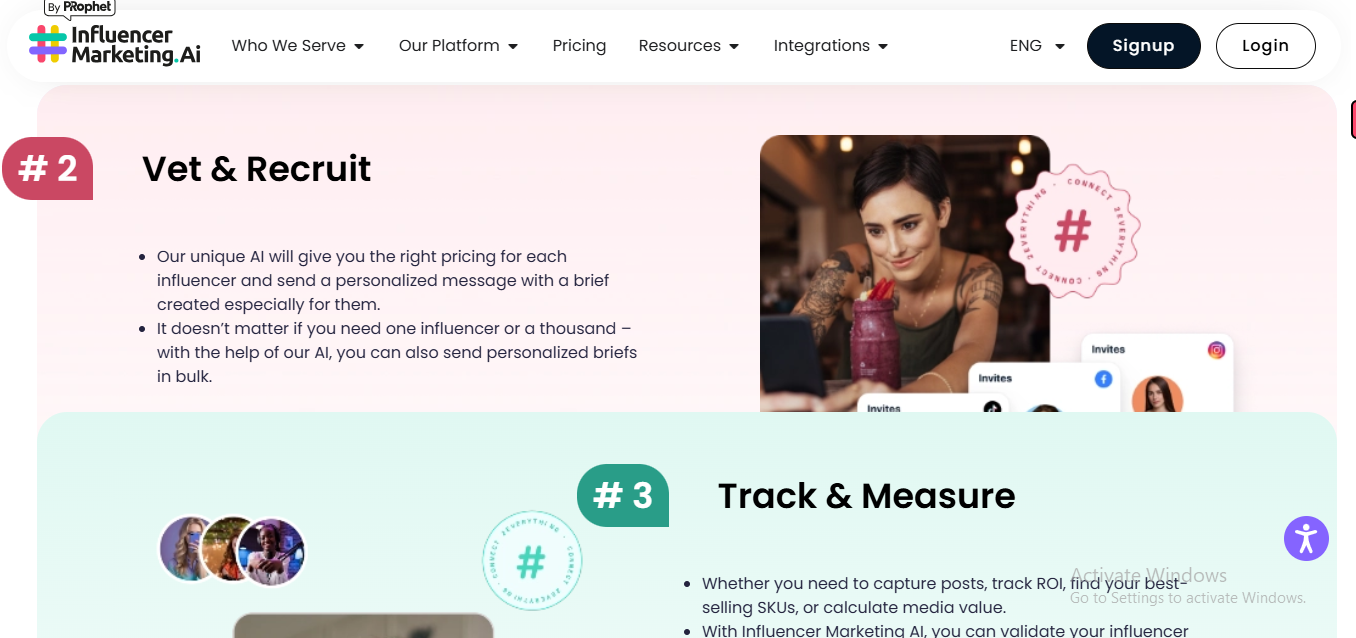
This platform is like the “genius brain” of influencer marketing. It uses AI to help you connect with the perfect influencers based on your brand and goals. Not just a pretty face though – it’s got some real smarts.
What I Loved:
-
AI-Powered Insights: Seriously, the AI is next-level when it comes to targeting and campaign insights. It saves a ton of time by predicting what will work and what won’t.
-
Data-Driven Approach: The reports and analytics are robust and easy to understand, which is great for managing multiple campaigns.
-
Automated Influencer Discovery: It’s like having a personal assistant sifting through influencers for you, based on your brand’s voice and audience.
What Could Be Better:
-
Pricing: The AI and features are awesome, but they come with a hefty price tag. Not ideal for smaller brands on a tight budget.
-
Learning Curve: It’s a little tricky to navigate at first. If you’re not super tech-savvy, it might take a minute to get the hang of it.
Price:
Prices are on the higher end, especially if you want access to all the AI-powered features. But hey, if you’ve got the budget, it’s worth the investment.
25. Traackr

Traackr is all about relationships and helping you manage influencer partnerships like a pro. It’s like your digital BFF for influencer marketing.
What I Loved:
-
Strong Relationship Management Tools: The platform gives you deep insights into influencer performance, making it easier to build long-term relationships.
-
Comprehensive Influencer Database: With Traackr, you get access to a huge database of influencers across different social media platforms, which is pretty sick.
-
Campaign Collaboration: It’s a great tool for collaborating with influencers, whether you’re doing a single post or a full-on campaign.
What Could Be Better:
-
User Interface: Honestly, the UI is a bit dated, and it’s not the most intuitive experience.
-
Expensive for Small Brands: Like Influencer Marketing AI, this is more for bigger players. It’s priced for brands with significant budgets.
Price:
It’s definitely on the higher side. But the value in managing long-term partnerships and high-level campaigns could justify the cost.
26. Upfluence
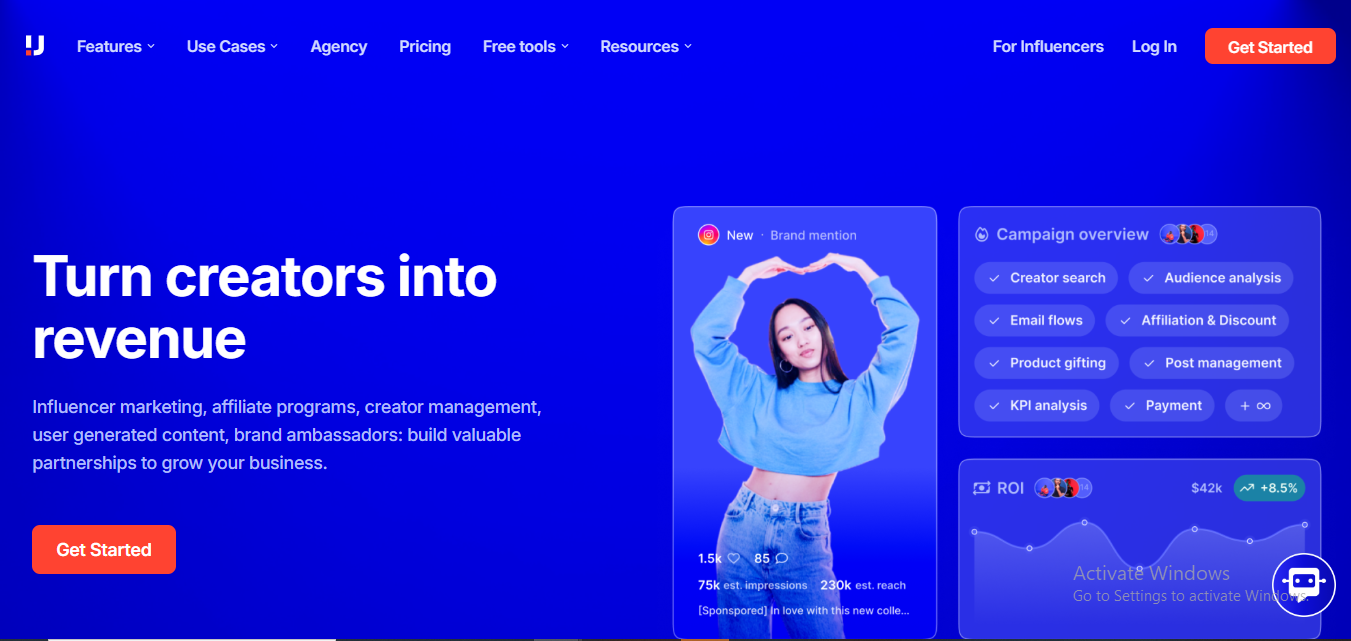
Upfluence is a go-to for many big-name brands, but let’s see if it’s still got that “wow” factor in 2025.
What I Loved:
-
End-to-End Campaign Management: You can track everything from influencer search to campaign execution and analysis, which makes managing large campaigns super easy.
-
Influencer Search Tools: Their search tools are really advanced, allowing you to filter by audience demographics, engagement rates, and more.
-
Integrated with E-commerce: If you’re running an online store, this integration makes it easy to track sales generated from influencer campaigns.
What Could Be Better:
-
Learning Curve: It’s a bit overwhelming at first, especially if you’re new to influencer marketing tools.
-
Price Tag: Like the others, it’s geared more towards bigger companies, so small businesses may feel the pinch.
Price:
Expect to pay a premium for access to their full suite of tools. But it’s worth considering if you’re a larger brand looking to level up.
27. Meltwater

Meltwater isn’t just for influencer marketing, but it’s definitely making waves in the industry, especially for those who need a full suite of media tools.
What I Loved:
-
All-in-One Platform: It covers everything from influencer marketing to media monitoring, making it super versatile.
-
Analytics and Reporting: The platform’s analytics are pretty detailed and help you track your ROI with ease.
-
Global Reach: Meltwater gives you access to influencers all over the world, which is great for global campaigns.
What Could Be Better:
-
Complexity: Because it offers so many tools, it can feel a bit overwhelming at first. If you’re just focused on influencers, it might be a bit overkill.
-
Pricing: Again, it’s a tool for bigger players, so expect to pay more for the full package.
Price:
It’s on the pricier side, but if you’re after an all-in-one solution, it might be worth it.
28. The Social Cat

The Social Cat is a bit of a hidden gem. If you’re looking for something a bit more “out there,” this one’s for you.
What I Loved:
-
Influencer Marketplace: The marketplace is easy to navigate, and you can find influencers that are a perfect fit for your brand.
-
Campaign Flexibility: You can run small-scale campaigns or go big – it’s super customizable.
-
Affordable: Compared to the other platforms, The Social Cat is super affordable, making it great for small brands and startups.
What Could Be Better:
-
Fewer Features: It’s not as feature-rich as some of the bigger players. You won’t get all the bells and whistles, but it gets the job done.
-
Limited Analytics: The analytics are decent but not as detailed as some of the other platforms we’ve looked at.
Price:
Super affordable, especially for small businesses looking for a budget-friendly influencer platform.
29. Later
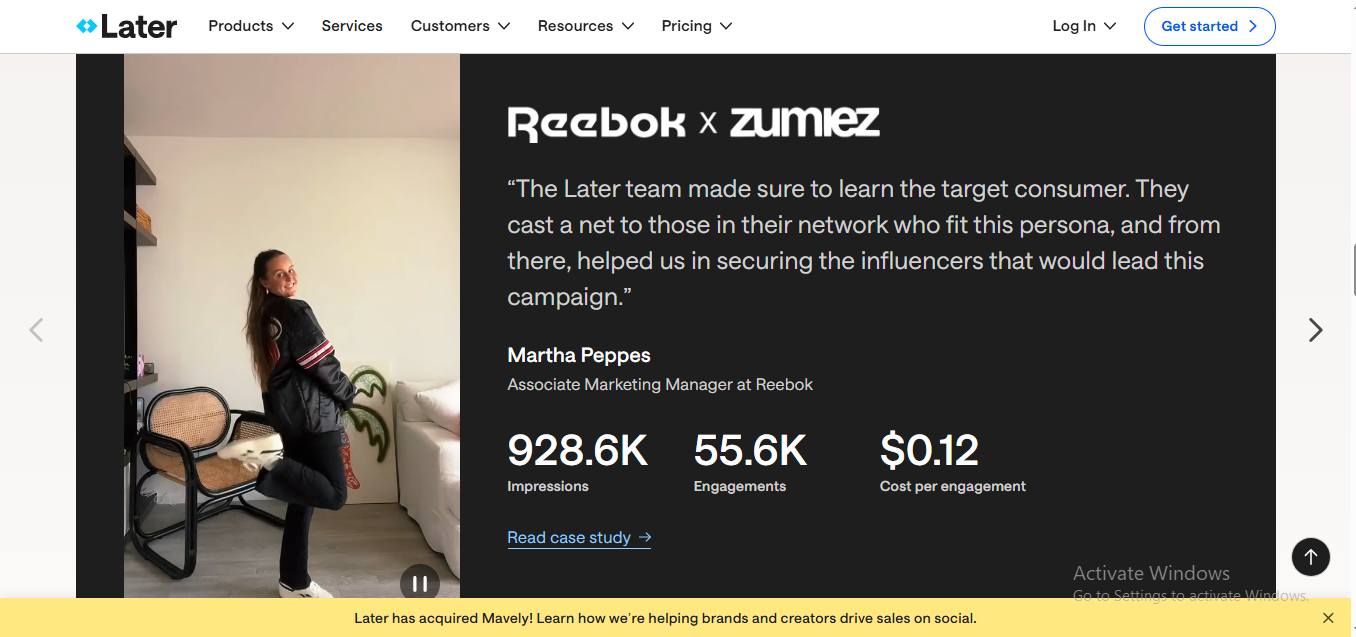
Okay, we can’t talk alternatives without talking about Later itself! Even though we’re looking for alternatives, it’s still one of the most popular tools out there for scheduling and managing influencer content.
What I Loved:
-
Super Easy to Use: Later’s interface is really intuitive, and it’s so easy to schedule posts and track campaigns.
-
Visual Content Calendar: The drag-and-drop calendar is perfect for visual planners who need to organize content quickly.
-
Affordable Pricing Plans: Later offers a free plan with limited features, and their paid plans are very reasonably priced for what you get.
What Could Be Better:
-
Limited Influencer Tracking: While Later excels at scheduling and content management, its influencer tracking and campaign management features are not as robust as some others.
-
Not Great for Large Campaigns: If you’re running a massive influencer campaign with lots of influencers, Later might feel a bit limiting.
Price:
Affordable pricing with a free version available. If you’re a solo entrepreneur or small business, this is a great option.
Final Thoughts
Each of these platforms brings something unique to the table. Whether you’re looking for AI-powered insights, an all-in-one solution, or something more budget-friendly, there’s an alternative to Later that’s perfect for your needs. Remember, the best platform depends on your goals, your budget, and the scale of your influencer marketing efforts.
- Best Clay Alternatives for 2025 - April 22, 2025
- Best Leadfeeder Alternatives for 2025 - April 22, 2025
- Best Snov.io Alternatives for 2025 - April 21, 2025



